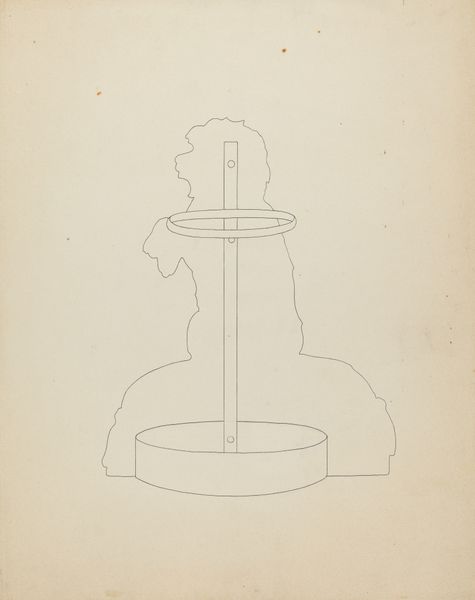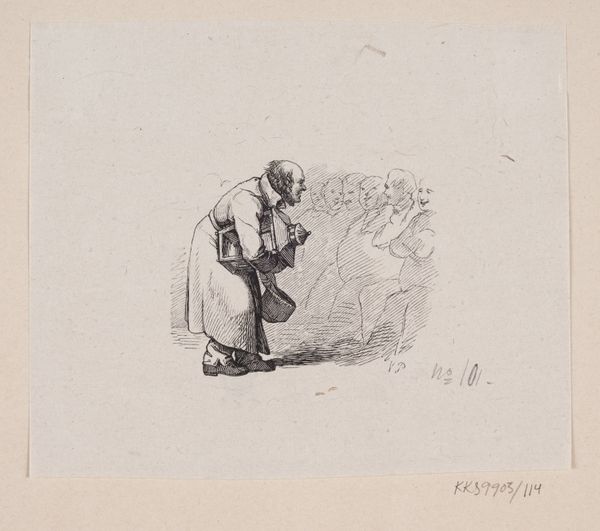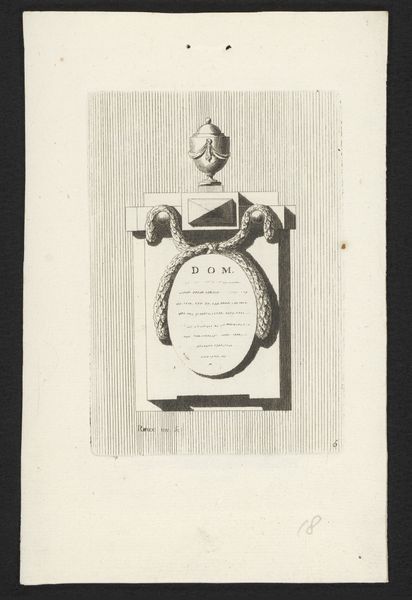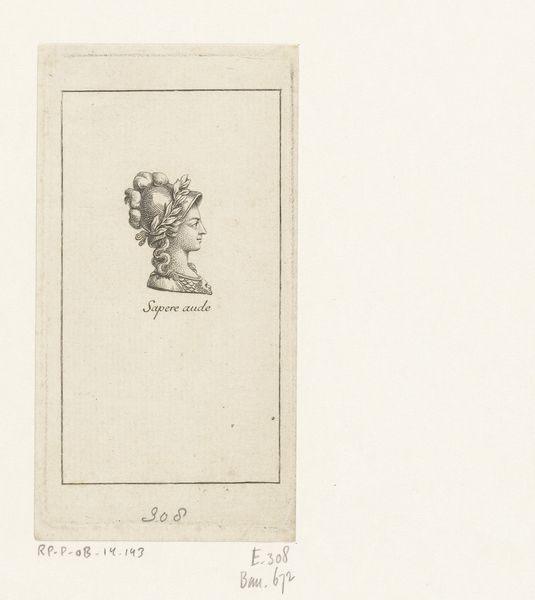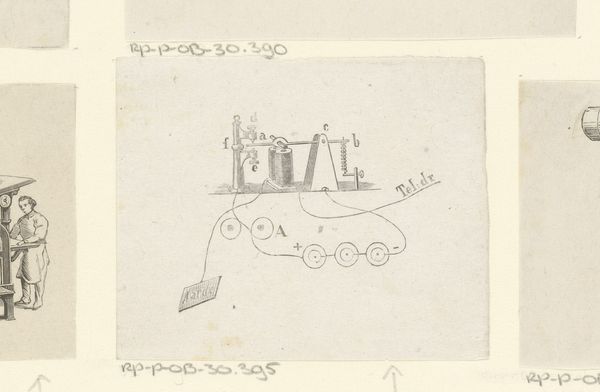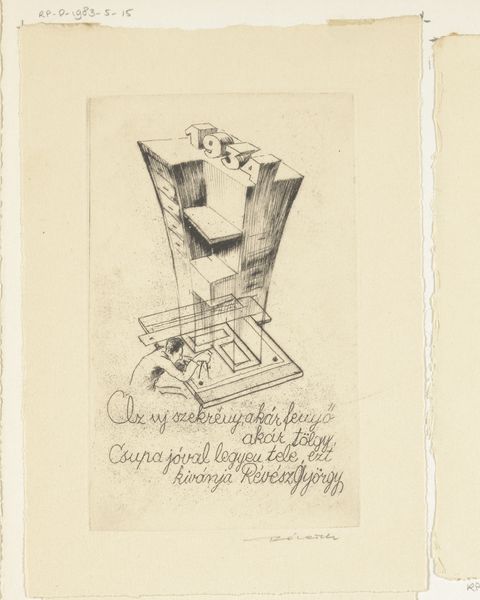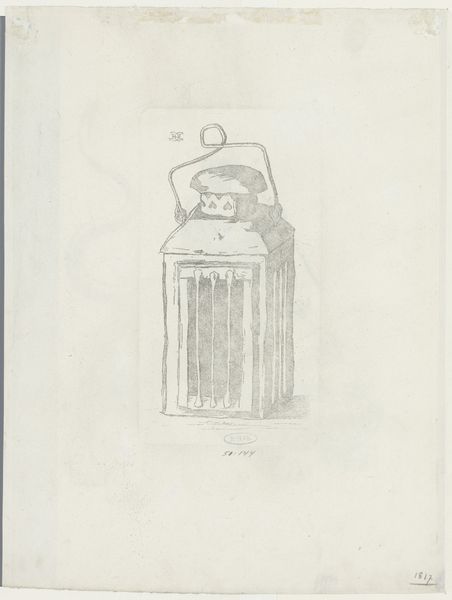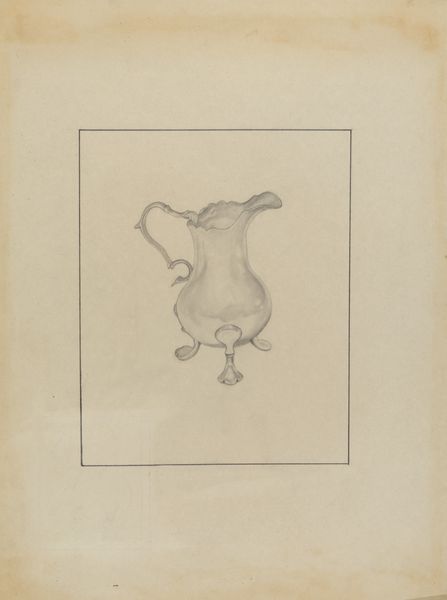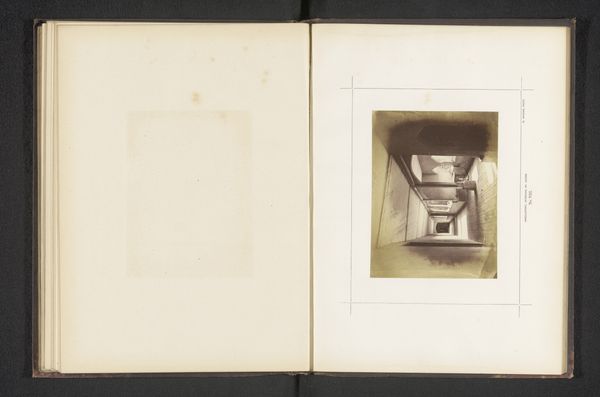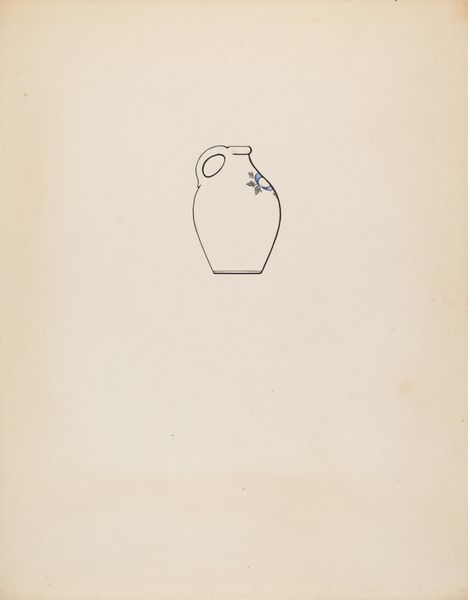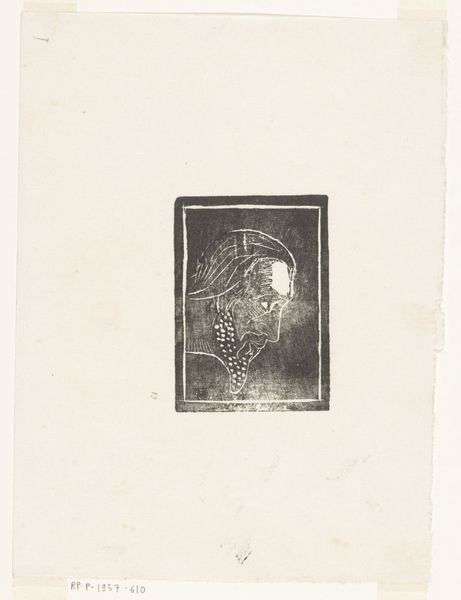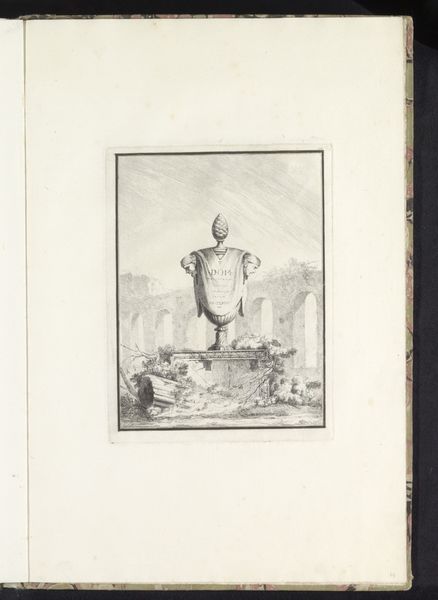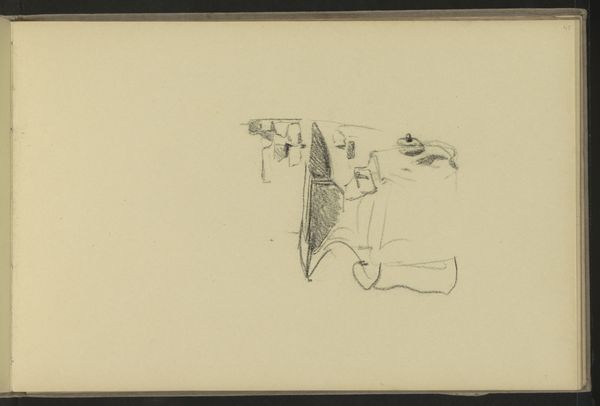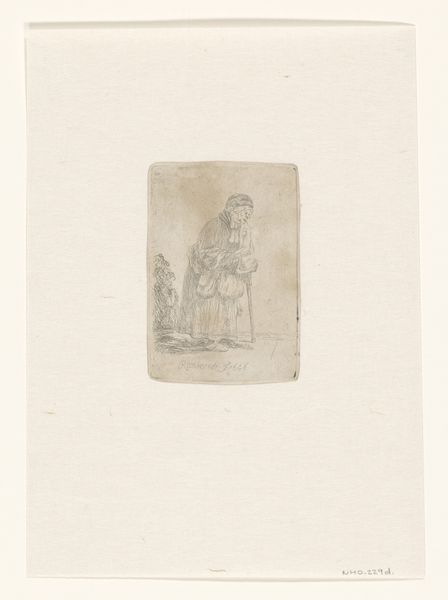
drawing, paper, pencil
#
drawing
#
paper
#
geometric
#
pencil
Dimensions: height 72 mm, width 56 mm
Copyright: Rijks Museum: Open Domain
Curator: Immediately, this image gives me a sense of austere geometry, a precision reminiscent of technical drawings, but softened somehow by the artist’s hand. Editor: Indeed. Here we have “Apparaat,” dating from between 1836 and 1912. It is currently held at the Rijksmuseum. It's rendered in pencil on paper and is attributed to Isaac Weissenbruch. Curator: An apparatus. It seems very industrial, yet strangely domestic. I imagine this object appearing in a home environment but with a distinctly scientific bent. Do you think its form alludes to something beyond its immediate representation? Editor: Well, one might consider the period. Given its date, it potentially embodies the burgeoning industrial era's optimism and also anxieties. Consider how this sort of diagram could both empower and alienate—demonstrating the progress and the increasing complexity of our daily environment. Curator: Precisely. We see forms echoing the human form, rendered precisely as to its utilitarian functionality. A kind of psychological transference appears to be taking place—are we making tools or are the tools forming us? What feelings would a contemporary audience member have as technology crept further and further into their lives? Editor: It definitely reflects the cultural fascination with the tangible output of technological advancement, which really shaped social and political expectations at the time. Pencil on paper provides this intriguing tension—between art and scientific depiction, objective data collection, and personal expression. The lines themselves aren't cold or mechanical; they evidence the hand and eye of the artist. Curator: That is where I keep circling back: this image holds a balance between impersonal machine logic and human artistic representation, creating a compelling conversation between technological possibility and human response to it. It brings forth images of advancement mixed with cultural nostalgia of familiarity and utility. Editor: And, finally, these objects shape identity as they mediate lived experiences. In this one small work we can recognize both continuity and profound shifts in values. Curator: A compact summary—from paper to psychology—very well observed.
Comments
No comments
Be the first to comment and join the conversation on the ultimate creative platform.
